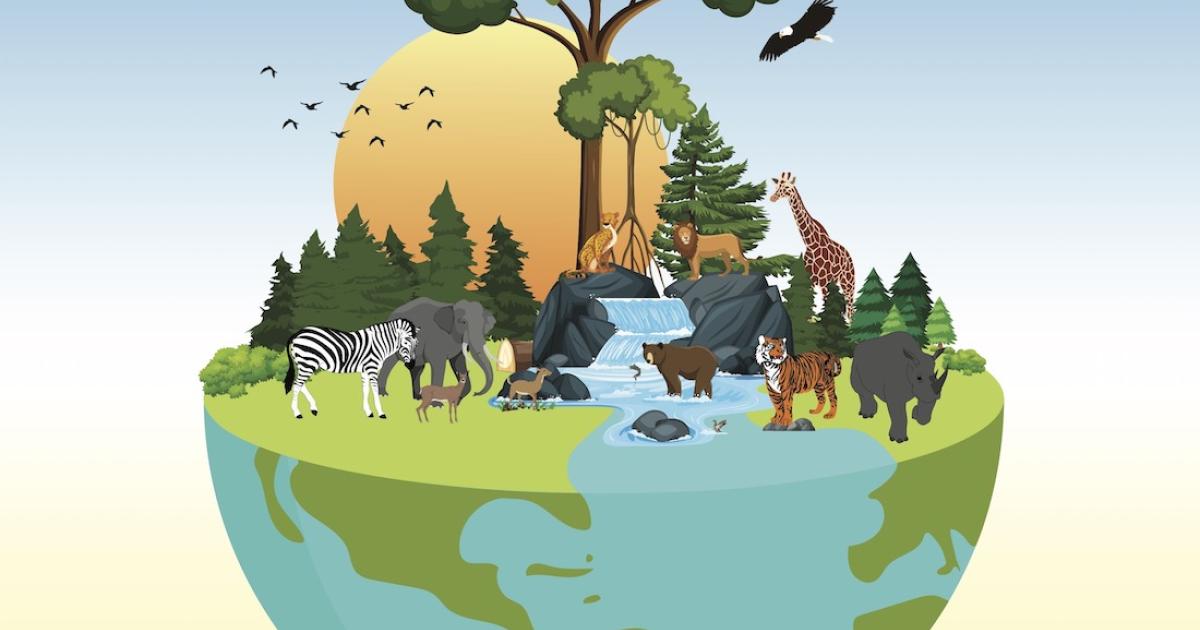Getting to the other side of the biodiversity crisis

Unless you’ve been hibernating, you know that planet Earth is in the midst of a full-blown, global-scale biodiversity crisis. Biodiversity refers to the total number of organisms across the planet that are present in ecosystems, species and genes.
Across the past 500 million years of Earth’s history, there have been five previous biodiversity “extinction” crises that have wiped out vast pools of living things. Earth’s recovery from these previous known extinctions (none of them caused by humans) has averaged 10 million years. A growing number of scientists and authors have concluded that we have entered the sixth extinction crisis — and this one is attributable to human activities.
Three facts amplify the speed and scale of our expanding biodiversity crisis:
Business as usual for biodiversity protection
Many useful initiatives are already implemented to conserve natural resources and preserve biodiversity. They include international collaboration through the United Nations Convention on Biological Diversity; preservation and restoration of ecosystems and species; pro-biodiversity changes in land use; pollution controls of air and chemical releases, wastewaters and hazardous materials; reductions in stratospheric ozone-depleting agents and more recent focus on methane controls from oil and gas operations; and numerous scientific studies and surveys intended to better document the existing status of biodiversity as well as identify previously undiscovered species.
Many of these actions are having an impact. The late naturalist E.O. Wilson estimated that, for land-dwelling vertebrates, global conservation efforts have succeeded in lowering the extinction rate of species by 20 percent. However, he noted, present-day conservation efforts fall “far short of what is needed to save the natural world. The conservation movement has slowed the species extinction rate but failed to bring it anywhere close to the prehuman level.”
Solving the biodiversity crisis
As more scientific, government, nonprofit, business and citizen voices exhibit greater awareness of the biodiversity crisis, calls are emerging for more ambitious and comprehensive actions to protect resources on a global scale. Accompanying this awareness is an increasing realization that the relative climate stability of the past 10,000 years (the period in which humans emerged and resided on the Earth) is coming to an end due largely to instability generated by our activities since the Industrial Revolution in the 1700s. Future efforts to stabilize and protect biodiversity must inherently account for greater climate variability.
Four global-scale initiatives will be essential to develop a biodiversity strategy that can stem the current crisis and enable the natural world to repair itself. They include:
- Mapping Earth’s biodiversity: We remain only partially informed of the total number of organisms in existence. In contrast to scientific advances to map the human genome, we are flying biologically blind on even knowing how many vertebrates (fishes, amphibians, reptiles, birds, mammals) and invertebrates (insects, crustaceans, earthworms, algae, fungi, flowering plants, bacteria and other microorganisms) live among us. Scientists working on biodiversity estimate that the number of known species presently exceeds 2 million and that only about 20 percent or fewer of Earth’s biodiversity at the species level have been discovered. Scientists are in a race against time to identify and classify as many existing species as possible before they disappear under the ever-expanding human footprint. Mapping the Earth’s biodiversity will require unprecedented collaboration, funding and multiyear commitments at global scale to obtain the most basic knowledge necessary to sustain life, including human life, as we enter a period of increasing climate and, hence, biological instability.
- Rewilding the world: “It is no accident that the planet’s stability has wavered just as its biodiversity has declined. The two things are bound together.” With these words, naturalist and broadcaster Sir David Attenborough has called for a planetary scale effort to “rewild the world” by restoring its biodiversity. This ambitious campaign includes switching to clean energy, expanding wilderness areas (to protect biodiversity and expand carbon sinks), enabling fish stocks to recover and instituting smarter fishing practices to protect vulnerable species, and reducing the amount of land necessary for agriculture (and thereby expanding habitats).
In parallel with these efforts, Wilson published in 2016 his proposal for “Half-Earth,” a comprehensive concept to set aside the largest possible reserves for nature for the millions of species that remain alive. Government policies, and the voluntary actions of aligned stakeholders, must play a critical role if these efforts are to succeed.
- Mobilizing the private sector: Presently, most companies, either privately held, publicly traded or state-owned, have not regarded biodiversity protection as a business priority, nor is this a topic with which senior executives exhibit much familiarity. This is beginning to change as elements of the natural world — climate, oceans, freshwater resources and forests — create risks to business operations and products. The World Economic Forum ranks biodiversity loss and ecosystem collapse as one of the top five threats humanity will face in the next 10 years.
The role of business in biodiversity protection begins with three interrelated steps: reporting nature-related risks in their financial disclosures by using a framework prepared by the Taskforce on Nature-related Financial Disclosures; understanding and mitigating biodiversity risks across company supply chains; and researching and applying alternative materials — green chemistry, synthetic biology and nanotechnology — in product innovation.
- Managing our way to a sustainable population level: Humans presently consume about 1.7 times the number of resources the Earth can provide each year. Current forecasts project that this demand will intensify as population increases. In 2023, the U.S. Census Bureau estimated that the world’s population reached 8.1 billion and forecasted that it will exceed 10 billion by 2060. Other forecasts from the United Nations posit the possibility of population reaching upward of 12 billion by 2100.
These forecasts, fortunately, are unlikely to hold. In a number of regions — the European Union, Canada and the U.S., China, Japan and Korea — are already at the population replacement level of 2.1 children per family or below. Higher birth rates persist in sub-Saharan Africa (except for South Africa), the Middle East and Pakistan. Greater schooling and economic empowerment of women have led to greater birth rate declines in only one or two generations in a number of countries. Foreign direct investment, multilateral aid and private sector efforts to support women can accelerate this progress, thus relieving pressure on biodiversity resources and human consumption levels.
Taken together with climate change mitigation, these four global-scale initiatives can not only buy important time to preserve biodiversity resources, they can also scale back the biodiversity crisis. “If global biodiversity is given space and security,” Wilson asserted, “most of the large fraction of species now endangered will regain sustainability on their own.” What is needed is commitment and ambition — starting now.





